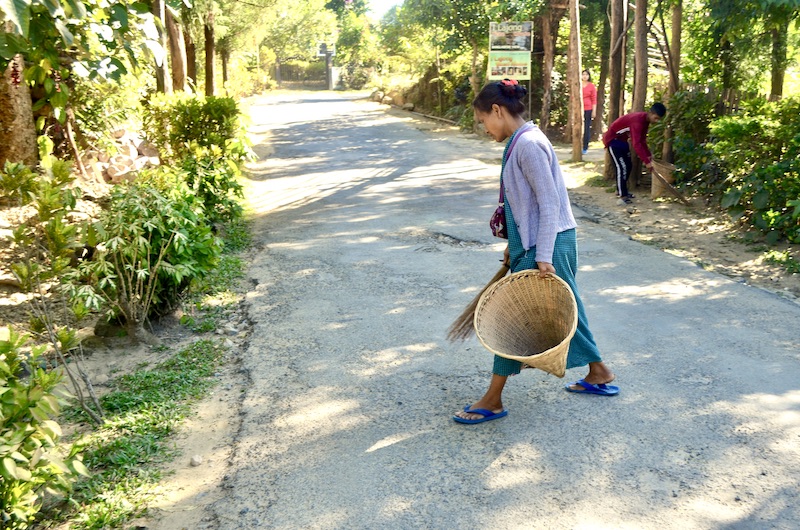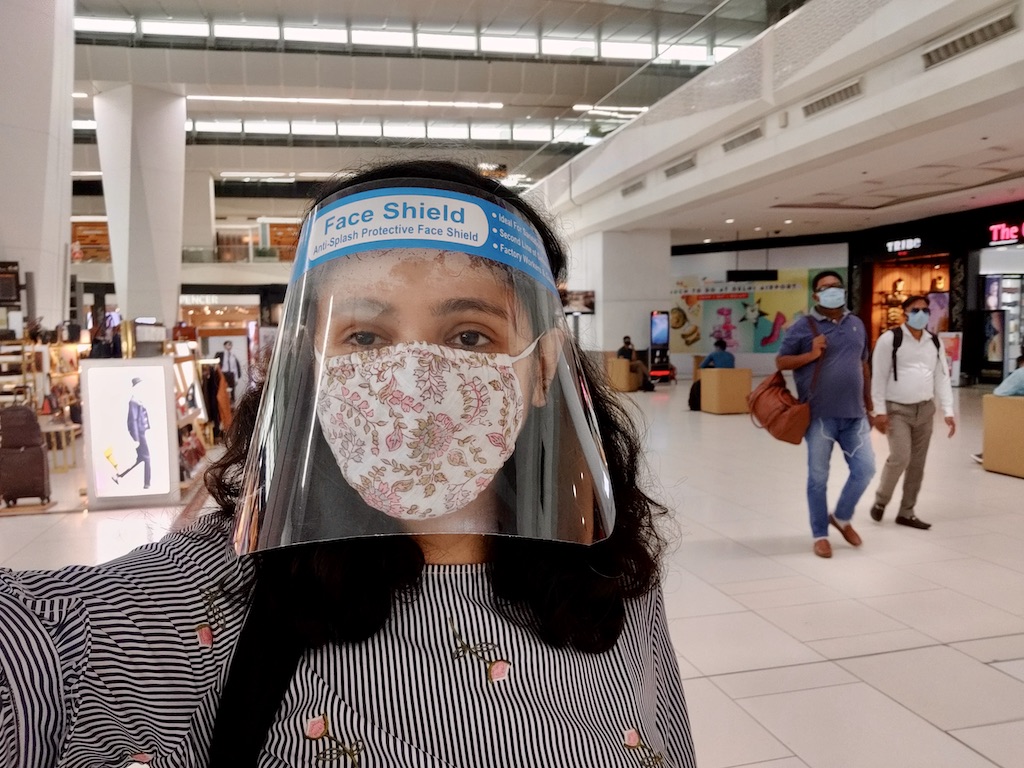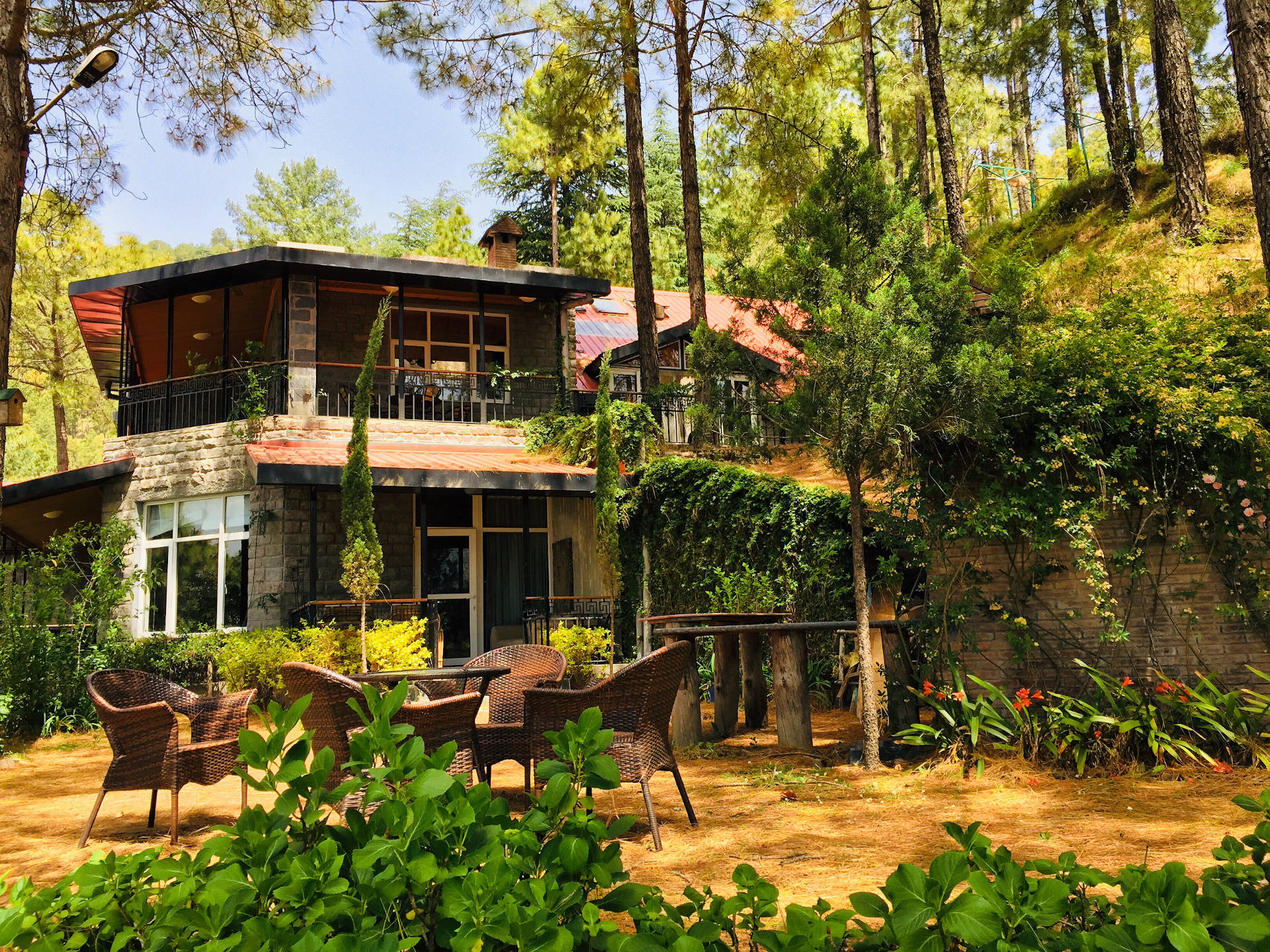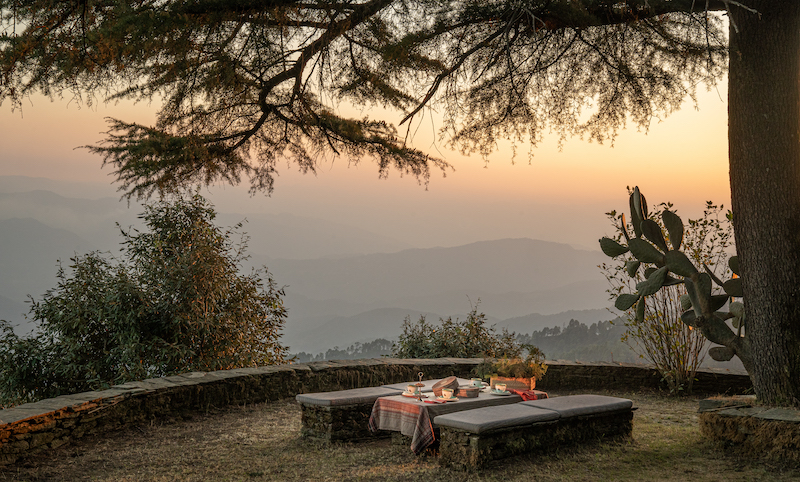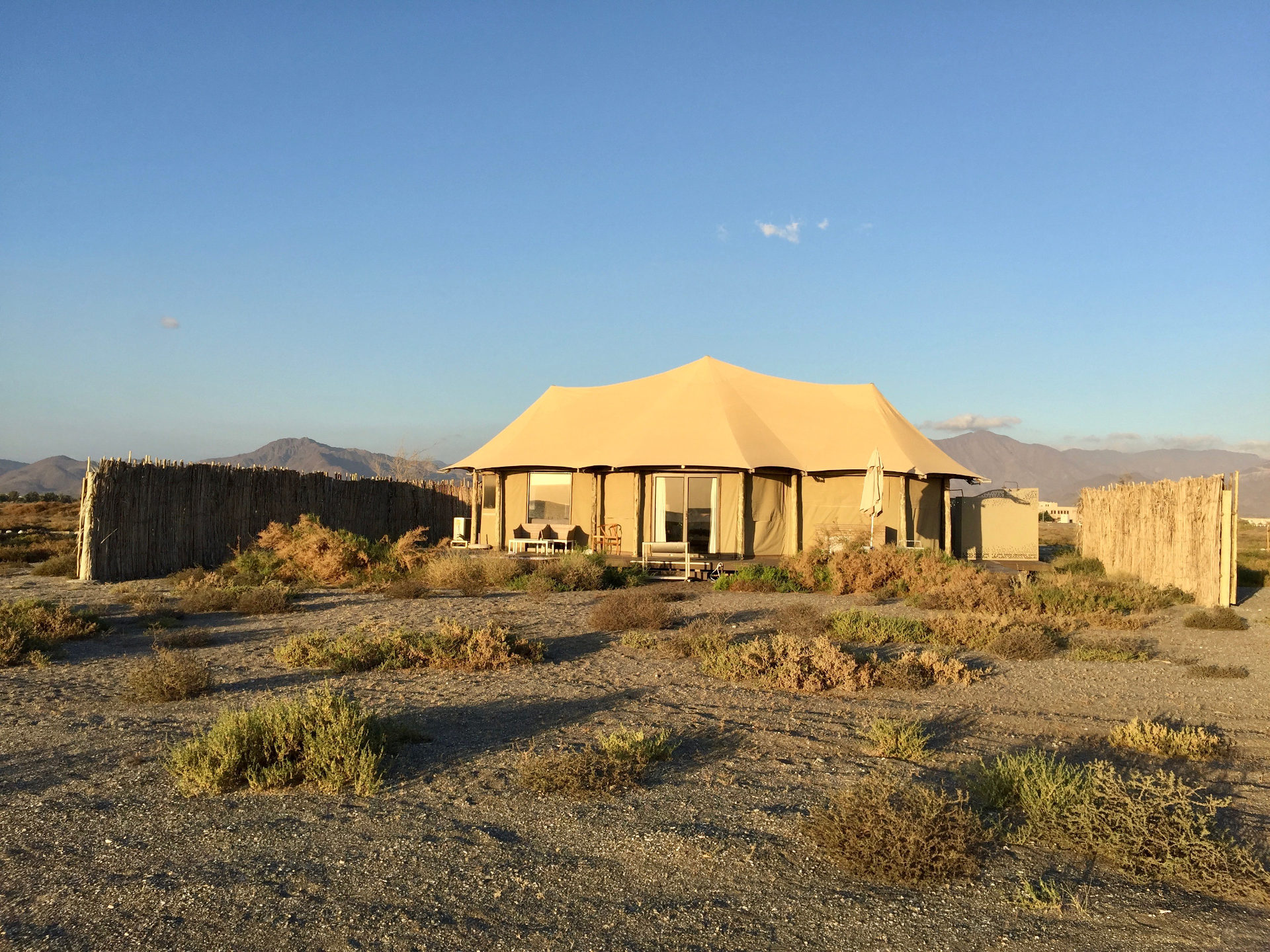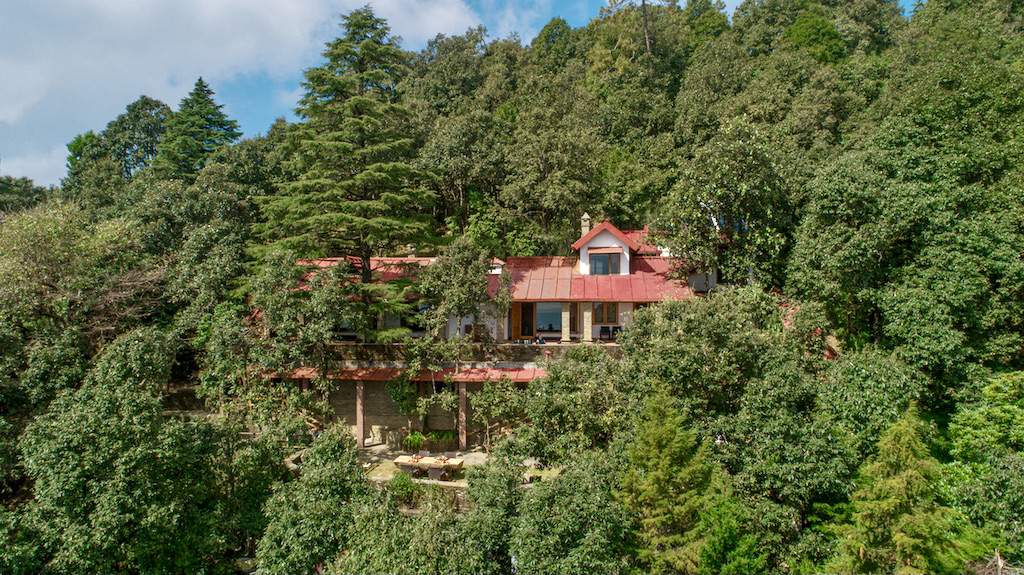It was in 2003 that this pretty village in Meghalaya, also known as God’s Own Garden, was catapulted into the limelight when it was first given the status of Asia’s cleanest village by Discover India. I visited some years later and found a quiet but stunningly charming village unlike any other in the country. Lanes lined with colourful flowers, bamboo and wood houses with lovely gardens, conical bamboo baskets placed at every few meters and a crystal clear stream in Mawlynnong gave it a picture book look.
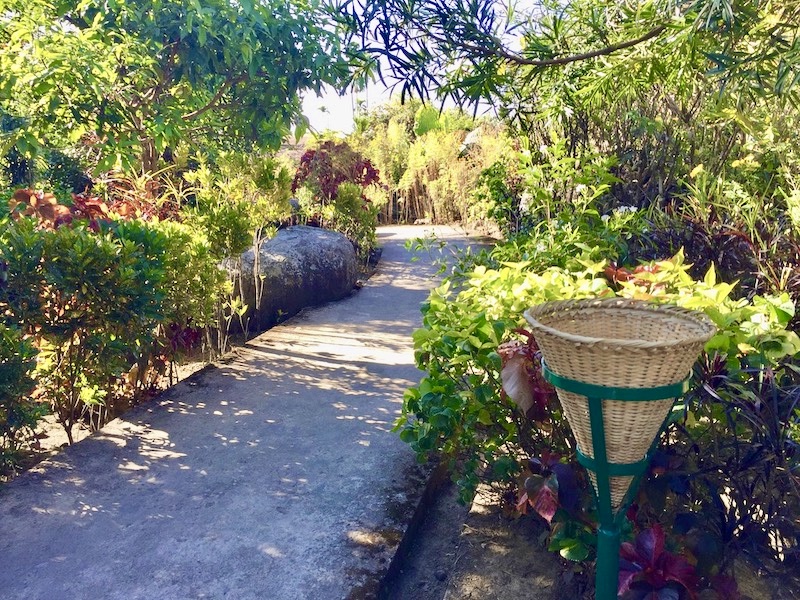
Bamboo baskets are placed all over the village
Nearly a decade later, on a second trip to Northeast India, I could not resist revisiting Mawlynnong and realised how much it has changed since its claim to fame puts it on the tourist map in a country where litter and garbage are commonplace sights. But fortunately one thing has not changed: its beautifully maintained look.
For starters, this Khasi village of about 600 people now has 15 homestays as compared to just one when I visited in 2009. This time, I stayed in one with a room big enough to accommodate three people, an attached bathroom and hot water. These luxuries didn’t exist on my first trip when I slept on a makeshift bed with a shared toilet outside the house.

There are now six cafes in the village
At that time Mawlynnong’s 98 families still relied largely on betel nut farming for their livelihood. Now they are benefiting from the rush of visitors and incomes have gone up substantially. That is no surprise: about 500 tourists arrive daily, sometimes for just day trips.
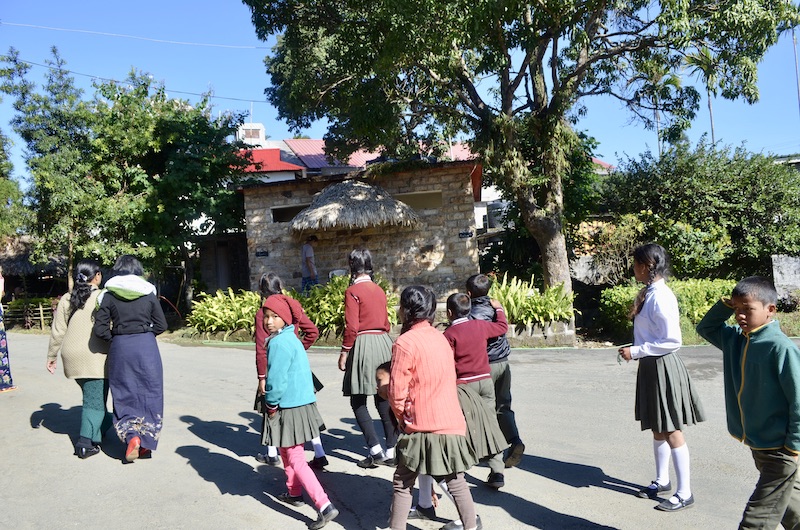
School children visit to learn about this village
I remember having Maggi for most of my meals when I was here in 2009, but this time we were pretty much spoilt for choice with as many as six cafes serving basic but delicious food. Small shops selling souvenirs have also popped up. In addition to the old skywalk from where you can spot Bangladesh, a new one leading to a machan at a height of 85 feet has been built. But fortunately the pressure of tourism has only doubled up the residents’ commitment to keep the village picture perfect.
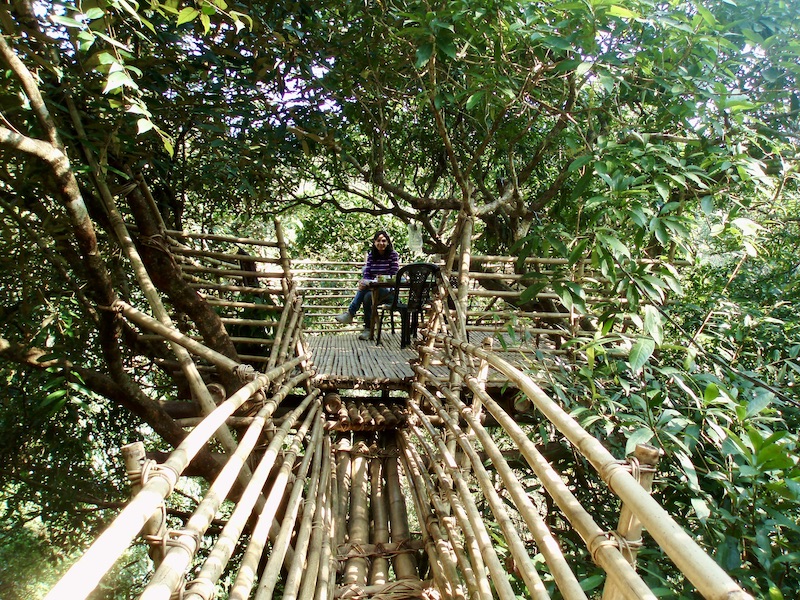
I had breakfast on this Machan when I visited in 2009
It is not easy and is a massive community effort says Henry Kharrymba who opened up his home (I Lajong Guest House) to visitors three years ago. “Now people know about this village,” he says proudly. But don’t they add to the pressures on this tiny village? “Sometimes visitors do litter,” he admits. “We don’t say anything. We simply go and pick up the wrapper or whatever they throw.”
Every morning four girls or women pick up a broom and sweep all traces of dead leaves and trash from every corner. The children empty the rubbish bins. Every Saturday they have a social walk, which is like a community clean-up drive to maintain the village and from young to old, everyone turns up to participate.
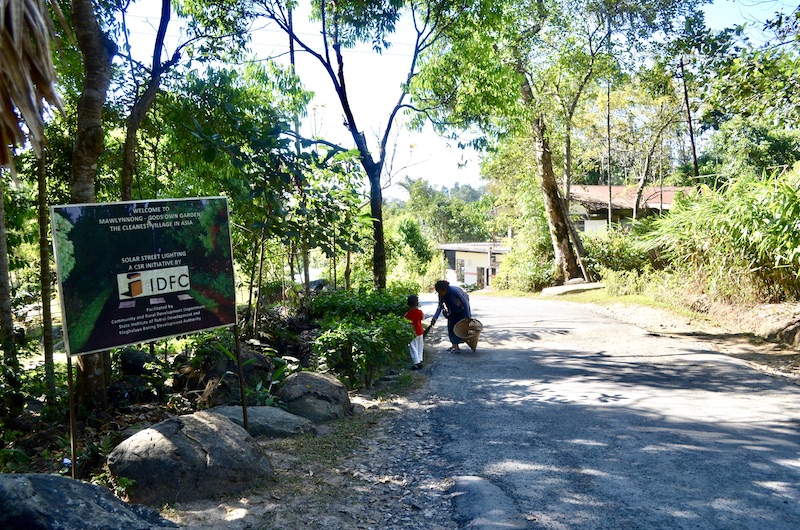
Every morning the village is cleaned
The remote village’s efforts have not gone unnoticed in New Delhi at a time when Prime Minister Narendra Modi has launched his “Swachh Bharat Abhiyaan.” In 2015, he commended the people of Mawlynnong for keeping the village so clean in his weekly Mann Ki Baat broadcast.
But this village is not just proud of its status as Asia’s cleanest village. It is also a pioneer in many other areas where rural India is lagging behind. It has 100% literacy and hence most people know English; each home has a toilet and in 2015 environmentally friendly solar panels were installed across the village for lighting.
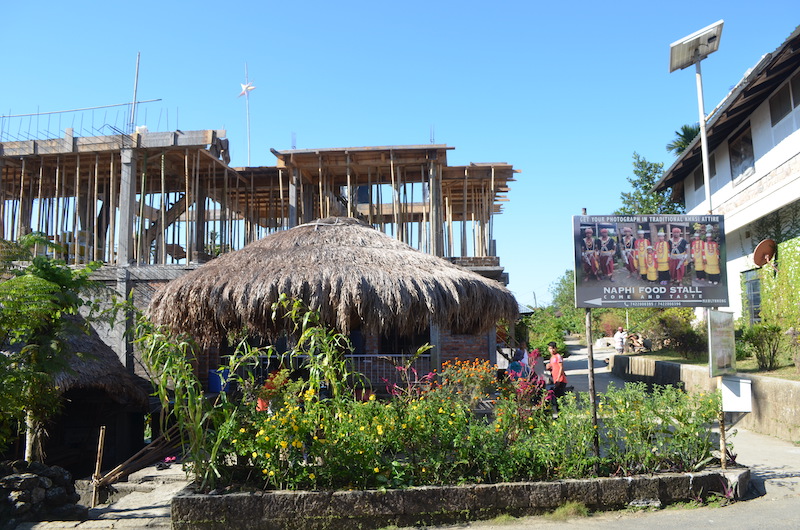
Solar panels were installed in 2015
No surprise then that there is virtually no visitor to Northeast India who comes away without taking a peek at this oasis. A consultant based in Gurgaon, Amit Khanna, says that Mawlynnong was not on his itinerary when he went to Shillong, but friends nudged him to pay a visit. “I went for the day and was completely taken aback. I thought I was in another country”, he says. “Why can’t other places replicate what they do?” he asks.
There is no easy answer to that question and it is hard to determine what lies behind the village’s commitment to cleanliness. Some stories say an outbreak of cholera more than a 100 years ago prompted a massive cleanliness campaign. What is for sure is that keeping their surroundings sparkling has become a tradition that is deeply ingrained in residents from early childhood.
Here are some pictures from both my visits.
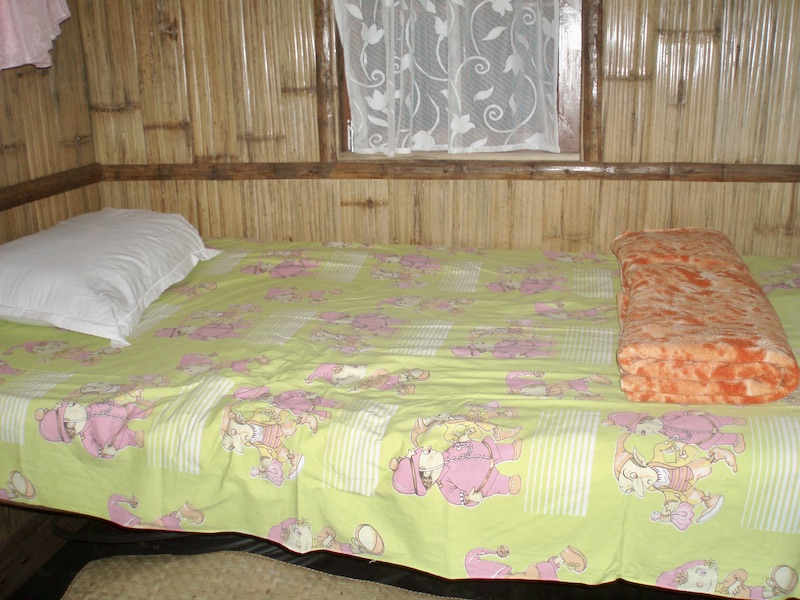
This was my simple room at the only homestay in 2009
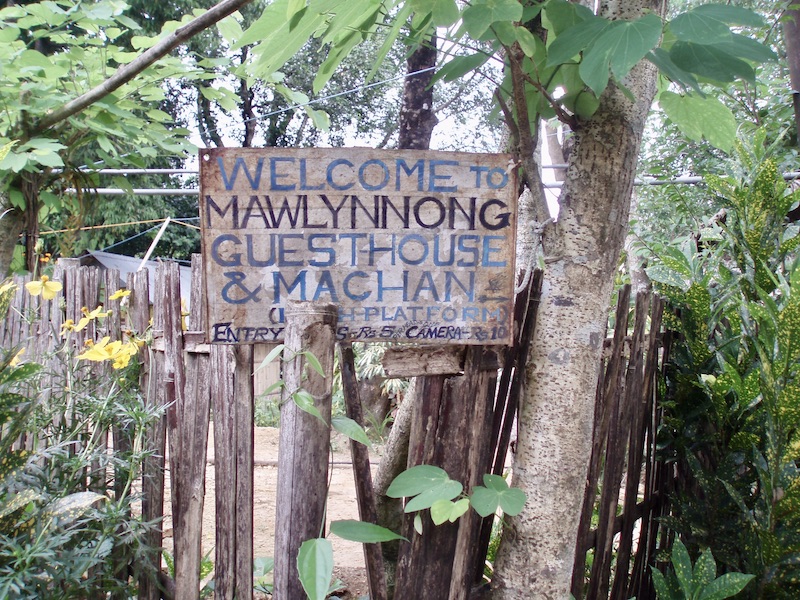
This was the only accommodation option in 2009. Now there are about 15 homestays.

Souviner shops have come up now
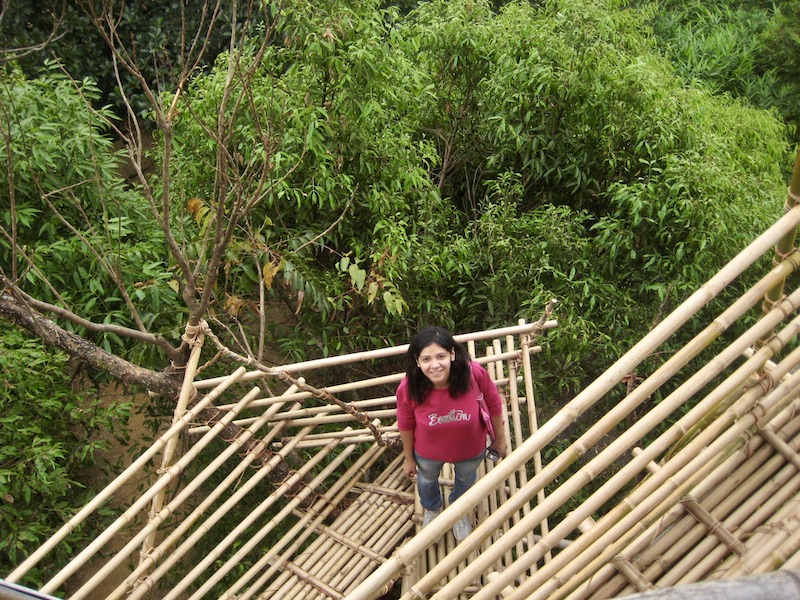
This was the old skywalk. Now there's a new one leading to a machan at the height of 85 feet.
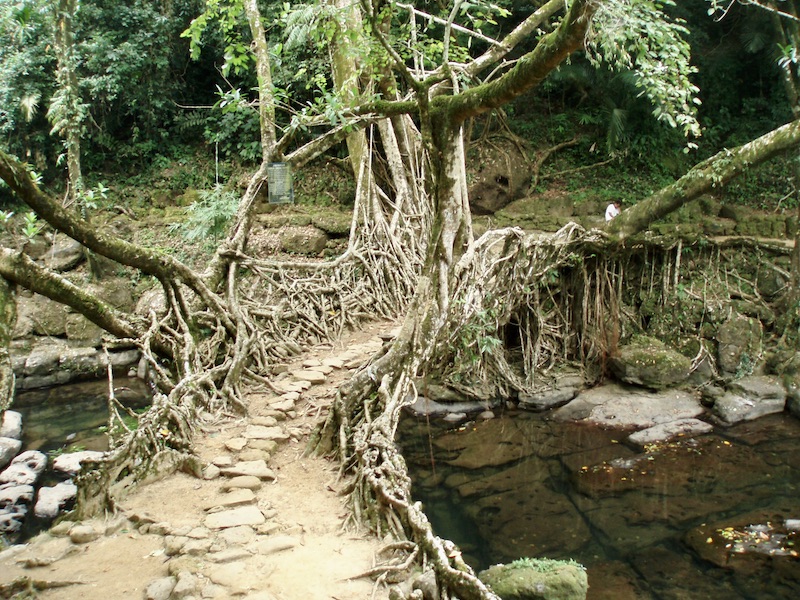
The living roots bridge is close to the village!
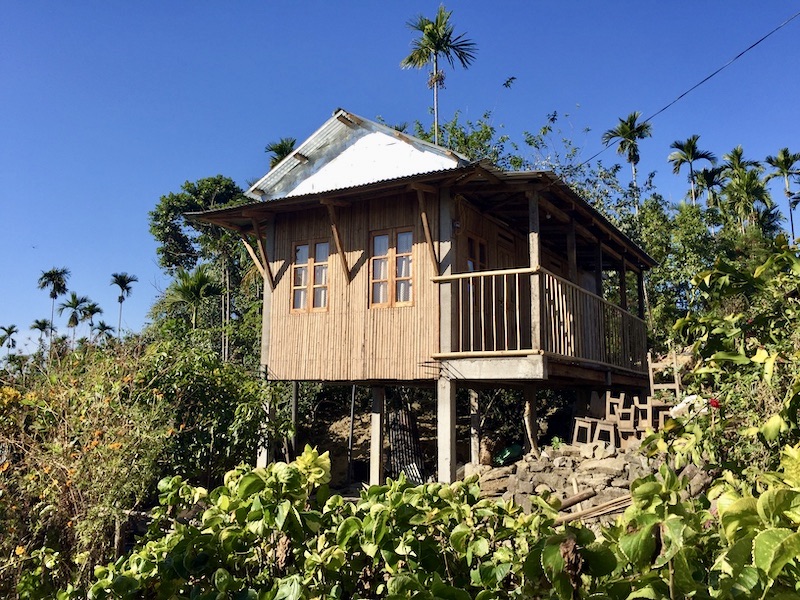
A typical Khasi hut
